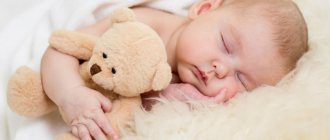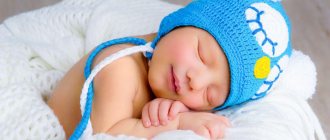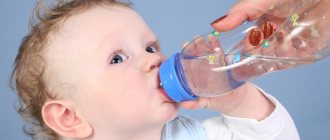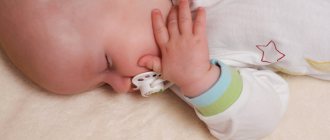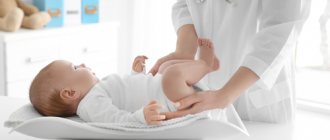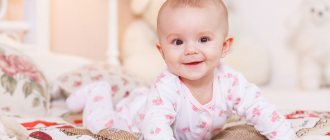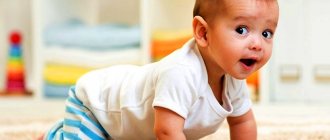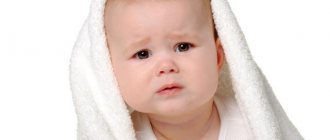Optimal humidity level for a children's room
Knowledge of some important features of maintaining humidity at the correct level and basic medical recommendations will help protect yourself and your child from the negative effects on the well-being of high and low air humidity, and protect family members from diseases that arise from improper distribution of air flows in the apartment.
All apartments require different levels of air humidity. An office, a warehouse, a balcony, a bathroom, a kitchen or a children's room - each of these rooms will have its own humidity standards.
A children's room is a place for the child to stay awake, relax, sleep, and play all kinds of games. Children spend a lot of time in it.
To avoid overheating and intense sweating, you should ensure access to fresh, humid air in the room during intense games and physical activity. Sufficiently humid air also promotes the child’s mental activity, brain function will be more productive, and concentration will be higher. The child will not be distracted, quenching his thirst every few minutes.
When the air is too dry, less oxygen reaches the brain, which leads to fatigue, irritability and apathy.
The humidity criterion is especially important for the sleep of children of all ages. While we are sleeping, we have no control over the level of moisture, but it is directly related to comfort and quality of dreams. For deep and restful sleep, the room requires a special atmosphere: it should not be stuffy or too hot.
In uncomfortable conditions, the child will wake up, toss and turn and throw away the blanket. This will also lead to irritation of the nasal mucosa and difficulty breathing.
But the cold can cause no less inconvenience. It forces you to subconsciously look for a source of heat to keep warm. In this case, sleep is likely to be superficial and restless. This can also create favorable conditions for the development of acute respiratory diseases, which over time can develop into chronic ones, incl. and such as asthma or bronchitis.
Increased moisture promotes the growth of mold, pathogenic bacteria and fungus. This leads to allergic reactions that develop into chronic respiratory diseases.
The ratio of air parameters affects the condition of the skin and eye membranes. There are skin diseases that are directly related to insufficient hydration (for example, atopic dermatitis).
All these points give reason to think about the optimal level of moisture in the air in a child’s room. There are general parameters that will indicate the optimal temperature and humidity in the children's room. These criteria are approved by pediatricians.
In world medical practice, it is generally accepted that this figure for children should be 40-60%. The parameter is constant, independent of seasonality, i.e. both winter and summer are the same. In this case, the temperature in the room should be maintained at a constant level of +22°...+24°C.
Remember that 40-60% is the normal air humidity in the apartment for a child in a healthy state. If there is a child suffering from a respiratory disease in the house, the optimal air humidity rises to 60-70%. This prevents nasal congestion and drying out of the mucous membranes. Recovery will be faster if you follow these recommendations.
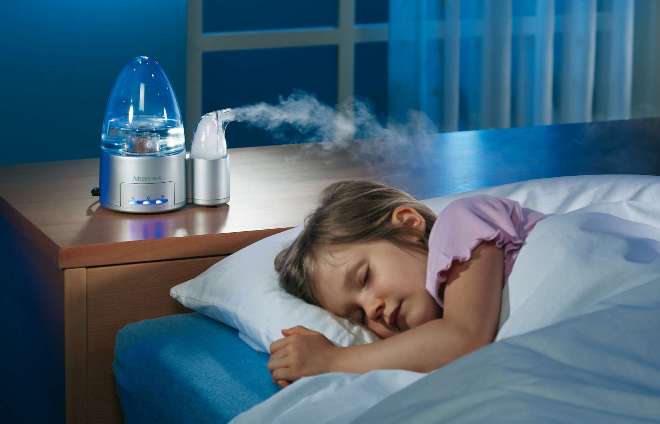
The value of air humidity in a children's room
The humidity indicator is the most important factor that affects the health of not only children, but also adults. The state of the baby’s immunity depends on its value. Parents should know what humidity is normal for a newborn's nursery. They will need to maintain the required level.
On a note. If the value is less than 50%, then measures should be taken to increase the humidity level.
What are the dangers of dry air?
In winter, when the heating is turned on, the humidity level in apartments drops significantly, which is dangerous for babies. Due to lack of moisture, the child's body begins to lose resistance to harmful microorganisms. Dried mucous membranes become thin and cannot resist the penetration of viruses and bacteria.
Negative effects of dry air:
- Hair becomes dry, lifeless, and split ends appear. The skin becomes thinner, dermatitis, cracks and other problems appear.
- The viscosity of intestinal and gastric juice increases, which leads to a slowdown in digestive processes.
- There is a feeling of the presence of sand in the eyes, dryness and irritation are felt.
- In rooms with low humidity levels, respiratory allergens spread quickly.
- General weakness, dizziness, runny nose may occur, and the load on the heart increases. These symptoms are the result of thickening of the blood and slowing of its circulation.
- Dry mucous membranes allow more bacteria and germs to pass through, causing nosebleeds.
- With dry humidity, inflammation of the adenoids, cough, and the development of sore throats and other respiratory diseases are common.
On a note. If the humidity level is insufficient, in addition to people, pets and indoor plants suffer.
Effects of humid air
And too high humidity levels lead to health problems. People living in rooms where the air is too damp often get sick. The normal air humidity in an apartment for a child should be 65% in summer and 60% in winter. As humidity levels increase in your home, fungi and other harmful bacteria can begin to multiply.
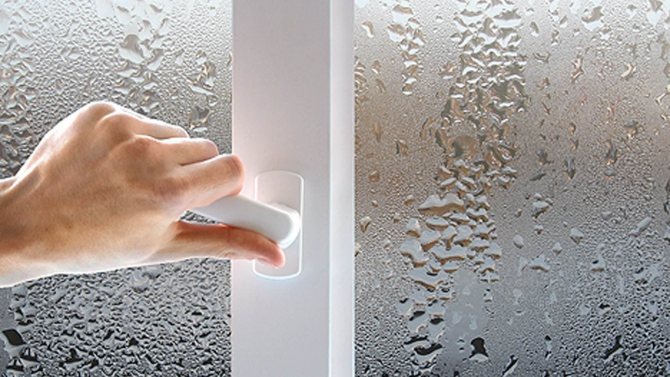
Constant condensation on the windows indicates that the air is too humid.
Consequences of high humidity:
- There is a smell of dampness and mold. The feeling of freshness in the house is lost and the feeling of stuffiness becomes stronger.
- Respiratory tract diseases occur more often, and they go untreated for a long time. Chronic diseases appear, such as asthma.
- Bed linen dries much slower in the house.
For your information. The most harmful is increased humidity for children with allergies.
How and with what to measure air humidity
You can measure the level of humidity in the air with a special device - a hygrometer. Now manufacturers of household medical equipment offer entire lines of different hygrometers with additional functions - a thermometer, a clock, an alarm clock.
Their design and functionality differ between brands. There are mechanical, condensation, and weight hygrometers. Each of them has its own advantages, but there are also disadvantages: low accuracy, inconvenience of use, large weight or volume of the device.
When choosing a hygrometer, focus primarily on the accuracy of its readings and the speed of response to changes in parameters. The most modern hygrometers are electronic. They have the following properties and advantages: accuracy, compactness, ease of use, beautiful design, additional functions, the ability to be placed both horizontally and vertically.
The electronic hygrometer has a convenient and understandable dial; it automatically adjusts the humidity levels in the surrounding air as quickly as possible after they change. It can additionally display temperature and even time.
We recommend installing the device directly between the sleeping place and the heating elements in the child’s room. This way the moisture level will be measured more accurately.
If you don’t have a hygrometer at hand, and you don’t want to spend money on buying one, or you need to measure the humidity of a new room once (for example, in a hotel or while visiting), you can use other methods.
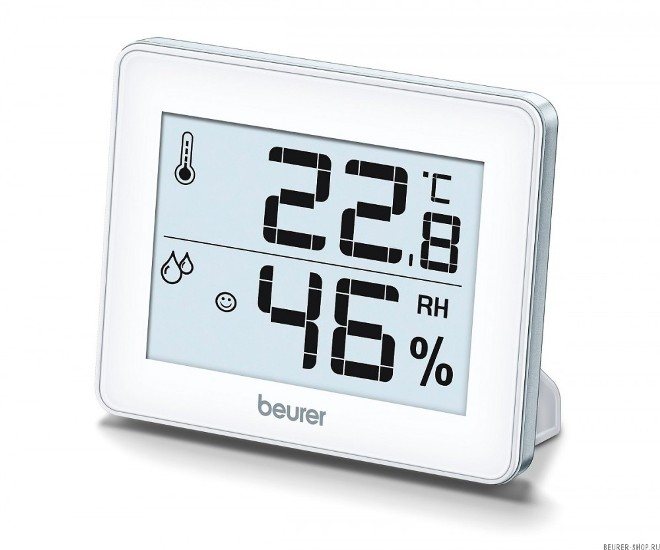
Assmann table
This method is based on imitating the operation of a device called a psychrometer. These are two thermometers that show different temperature levels. In order to make a similar device at home with your own hands, you can take a thermometer to measure air.
Measure the initial temperature in the room. Then take a wet cloth and wrap it around the end of the thermometer. Wait 5-10 minutes. Look at the temperature indicator. Subtract the difference between the indicators.
These two parameters need to be compared with the Assmann table, obtaining a result about the optimality of the air.
The method is quite approximate in determining the moisture level, and you also need to have a table at hand. If it is not possible to use tabular values, use the water in a glass method.
Glass of water
The method of measuring the moisture level using a glass cannot be called extremely accurate, but with its help you can determine the approximate level without leaving home.
To carry out the experiment, you need a glass, chilled water and a refrigerator.
Pour a small amount of water into a glass. Then place it in the refrigerator for 3-4 hours so that the water in the glass cools to 3-5°C.
Take out the glass and place it in the room where you plan to measure the humidity. If the glass is covered with sweat and fogged up, and then the water dries up in a few minutes, then the air in the room is quite dry.
If after a few minutes drops of condensation settle on the surface of the glass and begin to flow along the walls, this means that the air humidity in the nursery exceeds the normal level.
If after 5-10 minutes the perspiration on the glass has not dried or flowed, then this is evidence of a normal level of humidity in the nursery.
It must be remembered that the experiment must be carried out by placing the glass away from heating devices and equipment that heat up.
The readings of this test are quite approximate and may fluctuate if all testing conditions are not met.
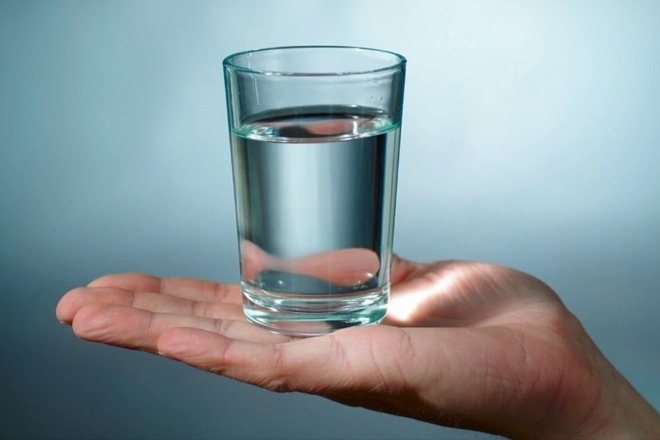
Spruce cone
This method is quite simple. The scales of cones can be perceived as a natural hygrometer; they depend on moisture and respond to its changes in the atmosphere.
Place the dry bud in a room away from heat sources and leave for several hours.
Then take a closer look at the scales. If they are pressed tightly to the base of the cone, it means that there is a lot of moisture in the room, its level is too high. If the scales open over time, this is evidence that the air is dry. If the lump remains the same, the moisture in the room is at the optimal level.
Temperature and humidity indicators in the child's room
According to modern medical standards, the optimal temperature in a room for a newborn should be between 18-20°C. With these indicators, all biological processes in the baby’s body occur naturally.
But! in my opinion it's too cold. An adult wants to wear woolen socks, wrap himself in a blanket and not stick his nose out of it. Therefore, in my practice, I guide parents to 22-24 degrees, and no deterioration in the child’s well-being is noticed.
Air humidity is also important for metabolism.
To monitor temperature data, place a thermometer next to the baby's crib. Humidity levels in the room are determined using a hygrometer, but it should be located away from heating appliances.
It is important to clearly understand the difference between the concepts of “room temperature and humidity” and “newborn discomfort.”
Each baby is individual, so you need to focus, first of all, on the baby’s well-being. If the temperature and humidity of the room are normal, and the newborn has cold and sweaty hands and feet, you should wear socks or an extra blouse.
Warm clothes, high temperature, lack of fresh air - the newborn sweats. Excessive skin moisture promotes the appearance and proliferation of bacteria.
In a stuffy room, the baby's sleep will be disrupted. Frequent waking up due to a feeling of thirst is reinforced reflexively over time. How to improve the sleep of a newborn, see the course: Peaceful sleep for a baby from 0 to 6 months.>>>
Correcting a wrong habit will require correction not only of the temperature regime, but also a lot of effort and patience from parents.
How to humidify the air
After measuring air humidity standards in an apartment for a child and identifying discrepancies, the next step should be to stabilize the parameters at the normal level.
If, according to the results of measurements, the air humidity in the children's room is below normal, you can increase it using several simple methods:
- Minimize the use of all heating and air-drying appliances. In winter, you can wrap the batteries with fabric to trap some heat.
- Perform wet cleaning several times a day - the air humidity in the room will increase.
- Place pots of flowers in the room and spray them regularly with a spray bottle.
- Ventilate the room and place several tanks of cool water, one of them near the heater, if you want to regulate the humidity during the winter.
There are also more expensive methods to increase the humidity in the nursery. Buy a small home aquarium, this will promote moisture and create additional comfort.
You can purchase a professional humidifier in the store. Their variety will satisfy any need. Their price also varies and you can buy both a budget and an expensive model.
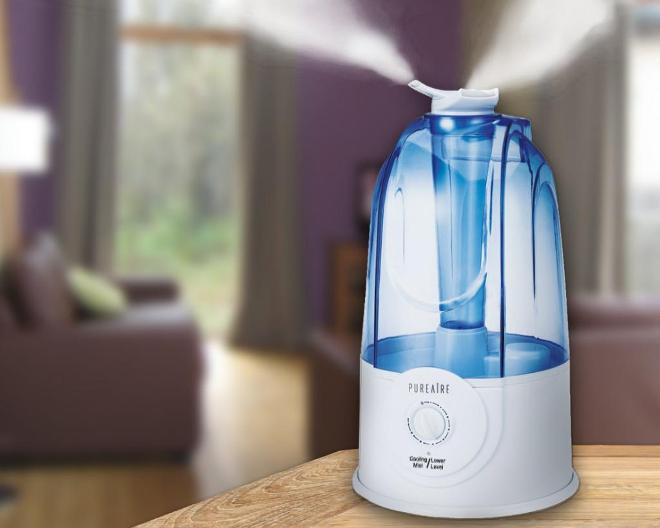
How to reduce air humidity
In case of high humidity, you can reduce it in several ways:
- You can turn on the room heater for 15-20 minutes several times a day.
- In order for high humidity to become normal, ventilate the room daily and do not dry washed clothes in the nursery.
Other ways to improve the microclimate in a room involve some monetary costs. Purchase and place special tablets in the room to absorb moisture. You can buy an air dehumidifier, and then the problem will go away within a few hours of operation of the device.
How to Maintain Humidity Levels for a Newborn
The moisture level in the air for a baby is one of the most important parameters for harmonious development and maintenance of health. Newborns tolerate all atmospheric changes more difficult than adults.
A very young child does not have a developed thermoregulation system; the concepts of cold and stuffiness are incomprehensible to him. All responsibility for maintaining the microclimate in this case lies with the parents:
- Too dry air forces the child’s body to accumulate strength for increased sweat production. If there is excess humidity, children may develop an allergic reaction to fungus and mold that multiply in such conditions.
- If you have a newborn in your home, the best option would be to purchase a hygrometer and constantly monitor the humidity in the baby's room.
- Based on the results of observations, it will be clear whether there is a need to purchase a humidifier or dehumidifier.
- Carry out regular wet cleaning and ventilation. Place a container of water next to the battery; it will absorb excess dryness.
- The temperature in the baby's room can vary from 20°C to 22°C. This will be optimal to avoid the slightest possibility of overheating.
- Monitor the condition of the child himself - give him food on time, bathe him, change clothes according to the season.
By following the recommendations and fulfilling medical prescriptions, parents can effectively regulate the level of humidity in the apartment and thereby protect the child from many related health problems.
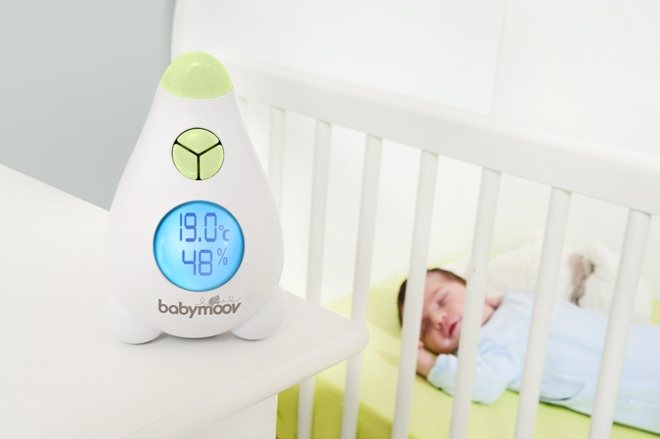
What is the optimal air temperature
The answer is very simple. The optimal one is the one that corresponds to the physical condition of the child and the time of year.
18-20 degrees is a comfortable, healthy temperature that the child needs . The younger the child, the more important it is to comply with these parameters.
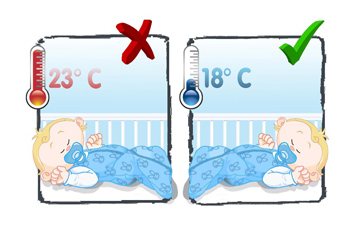
It is at an air temperature of 18-22 degrees that the child feels comfortable
Many parents will find this temperature quite cool and uncomfortable. But the child will not be cold. The child should breathe cool, moist air. A child is not an adult. This is the same person, but with different physiology and anatomy.
The peculiarities are that a baby’s cells divide at a tremendous speed, a lot of heat is generated, and this heat needs to be put somewhere.
The baby releases its heat through breathing. While the child breathes dry, warm air, then:
- loses a lot of fluid;
- blood thickens;
- mucous membranes dry out;
- Gastrointestinal juices thicken.
The latter causes the child to develop colic, gas, and anxiety. Mom doesn't know what to do.
If an adult’s room is hot and uncomfortable, then a child will be even more uncomfortable . Please note that an adult is surrounded by heat in the room, while newborns are wearing socks, scratches and a hat. These children are dressed by mothers who want the best for their child, who want to give them the best, to dress them, to warm them up: a warmer blanket, warmer socks, a knitted blouse.
In fact, such mothers oppress and destroy the child’s immunity.
What destroys a baby’s immunity the most? First of all, air. The air should be cool and humid. The child should not lose much fluid when he inhales dry, warm air.
When you adjust the temperature and humidity in a room, many issues are immediately resolved. The child becomes calmer, eats better, sleeps better, and his tummy stops hurting.
It would seem that such a simple question is temperature and humidity, but how many problems can be solved at once.

